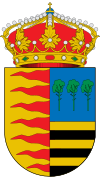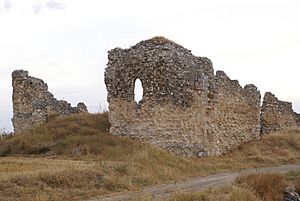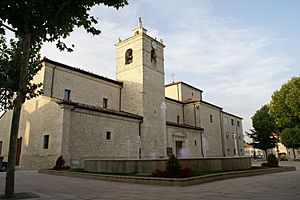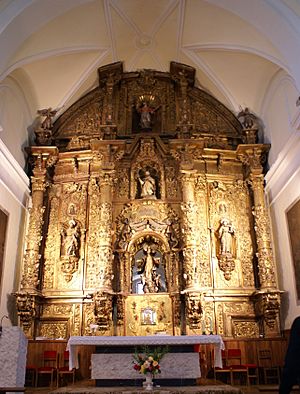Campaspero facts for kids
Quick facts for kids
Campaspero
|
|||
|---|---|---|---|
|
|||
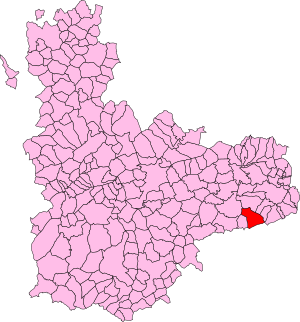
Location of Campaspero
|
|||
| Country | |||
| Autonomous community | Castile and León | ||
| Province | Valladolid | ||
| Comarca | Campo de Peñafiel | ||
| Judicial district | Valladolid | ||
| Commonwealth | Minguela | ||
| Founded | 11th century | ||
| Area | |||
| • Total | 46.56 km2 (17.98 sq mi) | ||
| Elevation | 919 m (3,015 ft) | ||
| Population
(2018)
|
|||
| • Total | 1,102 | ||
| • Density | 23.668/km2 (61.30/sq mi) | ||
| Demonym(s) | Campasperano/a | ||
| Time zone | UTC+1 (CET) | ||
| • Summer (DST) | UTC+2 (CEST) | ||
| Postal code |
47310
|
||
Campaspero is a small town in Spain. It's located in the province of Valladolid in the region of Castile and León. It's special because it's the highest town in Valladolid province, sitting over 900 meters (about 2,950 feet) above sea level. It's also very close to the border of the province of Segovia. Campaspero is part of the historic region called Castile, specifically Old Castile.
Contents
History of Campaspero
People have different ideas about where the name Campaspero comes from. A popular idea is that it means "Rough Field" in Spanish. This name fits the area well because it has a lot of rocky land.
For a long time, until 1833, Campaspero was part of the province of Segovia. But it was also very close to a town called Peñafiel in Valladolid. Because of this closeness, Campaspero became part of the Valladolid province in 1833.
Campaspero Today
Today, Campaspero is the only town in Valladolid province that belongs to a region called the Churrería. This region is mostly made up of towns from the Segovia province.
The Church of Santo Domingo de Guzmán
The main church in Campaspero is called Guzmán's Santo Domingo. It was built in the 18th century using stone from the town's famous quarries. The old church was falling apart, so they built this new one.
The church has a simple design. Inside, you can find some interesting carvings. One important carving is of the Ascension. It was made by Pedro Berruguete, an artist from the nearby town of Peñafiel, in the late 18th century.
You can also see statues of Santo Domingo of Guzmán, who is the church's patron saint, and San Buenaventura. These statues were made in the same century. They are part of the main altarpiece, along with the Ascension carving. These statues were carved from wood by Pedro Ventosa, an artist from Sepúlveda in Segovia.
On the left side of the church, there is a sculpture of Christ on the cross. It was made in the late 16th century, likely by Roque Muñoz in Cuéllar. On the right side, there is an altarpiece with a statue of the Virgin of the Rosario.
Campaspero's Quarries
Campaspero is built on a thick layer of stone, about 30 meters (nearly 100 feet) deep. The people of Campaspero have been using this stone since the town was first settled. The stone from these quarries has always been a very important source of jobs for the village. Many buildings in the province of Valladolid were built using Campaspero's strong stone.
See also
 In Spanish: Campaspero para niños
In Spanish: Campaspero para niños



